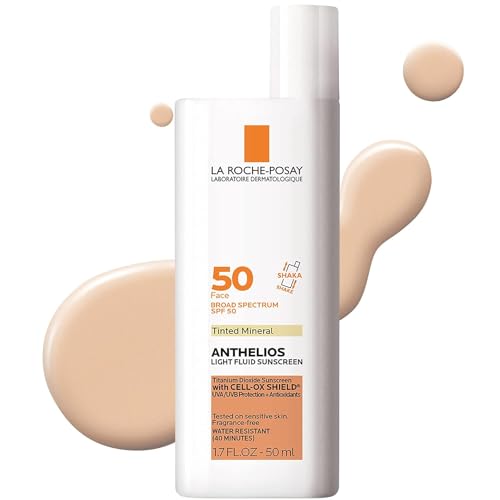Gorgeous, gathering up with sunscreen isn’t just about avoiding a sunburn; it’s a major defense tactic against skin cancer and the kind of premature aging that has nothing to do with being wise beyond your years. I’m talking wrinkles, sun spots, and that leathery look no one wants. But here’s the kicker: even the best sunscreen can’t shield you properly if you’re not applying it right. Dermatologists are pretty unanimous on this one.
They suggest grabbing sunscreen with at least SPF 30, ensuring it offers broad-spectrum protection, and checking that it can withstand a splash in the water. But let’s pause for a second and ask ourselves: Are we slathering on enough of this stuff to guard every patch of skin that sees the sun? Trust me, missing a spot is easier than you’d think.
More from Glowing Gorgeous: Find out here the Best Silicone-Free Moisturizers And Why Do You Care
Glowing First Glimpse
- Select a broad-spectrum sunscreen with SPF 30 or higher for effective protection.
- Apply sunscreen 15 minutes before sun exposure and reapply every two hours.
- Use about 1 ounce of sunscreen to cover all exposed skin thoroughly.
- Incorporate additional sun protection measures like UPF clothing and seeking shade.
Understanding Sunscreen and Its Importance
As someone who’s spent a fair amount of time researching and understanding skincare, let me explain how sunscreen works. It’s like a shield, really. The compounds in sunscreen are designed to absorb, reflect, or scatter harmful ultraviolet (UV) rays.
We are concerned with two main types of UV rays: UVA and UVB. UVA rays are primarily responsible for aging, while UVB rays lead to sunburns. However, both can mutate our skin cells, so sunscreen is not just a cosmetic choice—it’s a health imperative. Applying sunscreen correctly is crucial in this battle against skin cancer and premature aging. But, if it’s done half-heartedly, you might be fighting a losing battle. Inadequate use can lead to a false sense of security and sunburn and can accelerate damage to your skin cells, which might pile up to severe consequences over time. It’s also imperative we address some common misconceptions.
Whether the sky is painted over with clouds or it’s the middle of winter, UV rays don’t take a day off. That means neither should your sunscreen routine. Remember, UV light can pass through clouds, and snow can amplify their effects due to its reflective surface.
Choosing the Right Sunscreen
So, what’s the deal with selecting the perfect sunscreen? It’s pretty simple. Aim for an SPF of 30 or higher, ensure it promises water resistance, and looks after the whole spectrum—broad-spectrum coverage—that’s your UVB and UVA protection sorted.
For those with sensitive or acne-prone skin, you’ll want a sunscreen that’s as friendly to your skin as it is unfriendly to UV rays. And hey, don’t slather on that ancient tube of sunscreen you found at the bottom of a drawer. Expiration dates are not a suggestion—they’re there for a reason. As sunscreen ages, its protective filters can break down, leaving you unprotected.
There’s also this myth that higher SPF means you don’t need to apply as much. Wrong. It could lead to using too little, thinking you’re shielded, which only invites damage.
Application Before Sun Exposure
Let’s talk timing. Sunscreen needs a moment to get cozy with your skin. About 15 minutes should do it. This allows the sunscreen to create a proper protective layer. Think of it as a sink-in period. If slathered on the right as you step into the sunlight, you’re giving UV rays a free pass during that soak-in time, which is not what we want.
Reapplication Is Key
Now, onto reapplication—a step too many skip. Listen, it doesn’t matter if your sunscreen can outlast a marathon if it’s not on your skin. It’s time to reapply after two hours, another swim, or a good sweat. Many burns happen not necessarily from forgetting sunscreen entirely but from under-applying or neglecting to touch up after it’s been worn or washed away. A
t the heart of it, if you’re not generous and diligent with your sunscreen, you’re opening the door to potential burns and long-term damage—and who needs that? Not us. So, let’s keep that sunscreen flowing.
Step-by-Step Guide to Applying Sunscreen
When it comes to safeguarding your skin against the sun’s harmful effects, applying sunscreen is a non-negotiable step in your daily routine. And it’s not just about slathering it on; there’s an art to it that maximizes your protection. Here’s how you do it with precision:
More from Glowing Gorgeous: Find out here Hyram’s Recommended Face Sunscreens For The Summer
First, you need a generous amount of sunscreen to cover up. We’re talking about 1 ounce or so, roughly the amount it takes to fill a shot glass. This quantity is crucial to cover the entire body adequately.
For your face, measure out a nickel-sized dollop of sunscreen to start. Remember, it’s too little, and you’re skimping on protection.
Applying Sunscreen on the Face

The skin on your lips is also vulnerable, so a lip balm with an SPF of at least 30 is necessary.
One such product is the Jack Black Intense Therapy Lip Balm SPF 25. Its combination of conditioners and antioxidants makes it a solid choice for keeping your lips shielded from UV rays while staying hydrated.
Applying Sunscreen on the Body
When tackling the body, start from the top and work your way down, ensuring you reach those commonly missed spots: the back of your neck, ears, and feet – including the soles if you plan to lie out or wear open shoes.
For areas like your back, which are tricky to reach, using a sunscreen spray or asking someone to help apply a lotion ensures no spot is unprotected.
The La Roche-Posay Anthelios Ultra-Light Sunscreen Lotion Spray Broad Spectrum SPF 60 is a product that comes in handy. Its lightweight, full-reach design makes it simple to cover those hard-to-reach areas effectively.
Special Considerations for Kids
Kids have delicate skin, so when applying sunscreen, be as gentle as possible. Use a sunscreen specially formulated for their sensitive skin and start with small amounts, rubbing it in thoroughly. Be vigilant to avoid their eyes, as any contact can cause irritation, and make sure they wear hats and protective clothing.
Reapply it every two hours or after swimming or sweating, just like for adults, to maintain optimal skin protection.
Common Questions and Misconceptions
When we talk about sunscreen, I can’t help but notice that there’s a heap of confusion out there. Let’s tackle some of these head-scratchers together. Starting with the big one: should sunscreen be slathered on before or after moisturizer?
The order does matter. We should apply moisturizer first to hydrate the skin, followed by sunscreen. This way, we ensure maximum protection without compromising the skin’s barrier function. Now, take your time with this routine. It’s advised to wait about five minutes after moisturizing before going in with the sunscreen to give your skin a moment to absorb each product properly.
With the whole pat versus rub debate, I’ve seen it go both ways. Some swear by gently patting in their sunscreen, arguing that it prevents skin dragging and helps avoid irritation. However, let’s be honest: we want our sunscreen to cover all bases. So, rubbing it in ensures an even, comprehensive layer, which is crucial. But remember, gentle is the keyword. A soft, circular motion does the trick without triggering alarm bells for your skin’s comfort.
Now, what about sunscreen doubling as a moisturizer? It’s appealing, I get it — one less step in the morning. Lo and behold, some sunscreens come formulated with hydrating ingredients, making them quite suitable for the role.
But here’s the catch: not all sunscreens are created equal. For those of us with dry skin, a separate moisturizer might be necessary to keep the skin from throwing a fit. Those with oily or combination skin types might hit the jackpot with an all-in-one. Just look for one tailored to your skin’s mood swings.
Speaking of product choices, La Roche-Posay Anthelios Melt-in Milk Sunscreen is one pick that marries broad-spectrum protection with a lush consistency that can hydrate. It’s a winner for all skin types, and its fast-absorbing, non-greasy formula means you won’t feel like you’re wearing a mask. The product also contains antioxidants, like sending your skin on a spa day every day. Its suitability for sensitive skin is the cherry on top. Imagine getting robust SPF 100 while keeping your skin pampered — this kind of versatility we need.
So here’s the scoop – when it comes to total skin health, you shouldn’t skip moisturizer or sunscreen unless you’ve found an exceptional product that caters to your needs. And while patting might be the golden rule for applying serums, an even, rubbed-in layer of sunscreen won’t let any sun rays sneak through. Let’s not forget to make informed choices based on your skin type; your skin will thank you.
Additional Sun Protection Measures
We’ve tackled how to layer your sunscreen effectively after moisturizer, but our skin defense strategy should continue. Going beyond the bottle, we must amplify our armor against the ultraviolet assault.
For example, clothing with an Ultraviolet Protection Factor (UPF) acts as a formidable shield. Such garments are precisely woven to block the penetration of UV rays, safeguarding the skin with an efficacy that doesn’t diminish over time or with washing. Think of UPF clothing as permanent sunscreen for the fabric touching your skin.
Then, let’s talk about sunglasses. Our eyes are precious, and exposure to UV rays can lead to severe conditions like cataracts. Wearing sunglasses that offer 100% UV protection is essential for our eyes’ health while preventing the delicate skin around them from potential damage. Ensure that the pair you choose promises complete UV defense; this is a case where function trumps fashion—but yes, you can have both.
And pay attention to the simple hat. A brimmed hat with a wide circumference can provide a personal patch of shade, mainly safeguarding the often exposed and sensitive areas: the face, neck, and ears. This area is particularly prone to skin cancer, so a hat can be a formidable ally in your sun-protection arsenal.
To craft an all-encompassing sun protection regime, we must recognize the significance of shade, particularly during peak sun hours—typically from 10 a.m. to 4 p.m. The enthusiastic sun can be relentless, and seeking out a cooler, shaded spot offers immediate relief and a strategic move in long-term skin care.
It’s about being innovative and proactively managing your UV exposure. This discussion isn’t meant to scare you indoors—we all need a bit of sunshine for healthy vitamin D levels and the sheer joy of it. Instead, it’s about being equipped with the knowledge and tools to enjoy the sun responsibly.
So lather on that sunscreen, don the UPF gear, slip on sunglasses, and perhaps settle beneath an umbrella. Consider these protective moves as necessary companions to your sunscreen, creating a robust defense system against the glaring antagonism of UV rays.
Sunscreen Myths Debunked
Since I’ve spent significant time researching sun protection, there are quite a few misunderstandings about sunscreen. One persistent myth is that there’s no need to swathe your skin with sunscreen on a cloudy day or during winter months.
You need to know that UV rays don’t take a break when the sun does. Even on overcast days, up to 80% of those sneaky UV rays can pass through the clouds and harm your skin. And in winter? Snow can reflect up to 80% of UV radiation, increasing exposure, especially at high altitudes.
Now, let’s talk about those tiny particles that make modern sunscreen so effective: nanoparticles. I’ve seen people worry about the safety of these minuscule components. Here’s the deal: research indicates that nanoparticles do not penetrate the skin to reach living tissue. Instead, they stay on the outside layers of the skin, providing protection without causing harm. The concern here is often more theoretical than factual, with extensive studies showing that they are safe for use in sunscreens.
Lastly, some of you question whether sunscreen can cause Vitamin D deficiency. It’s a valid concern, but I can assure you that wearing sunscreen does not block all Vitamin D absorption. The body can still produce this essential nutrient even with sunscreen on.
Plus, you can always get a healthy dose of Vitamin D through diet or supplements if you’re worried. Remember, the end goal here is to keep your skin healthy and resilient against the adverse effects of too much sun exposure, which includes premature aging and, more worrisomely, skin cancer. Using sunscreen as part of a broader sun protection regimen, as discussed before, helps ensure you’re covered—literally.
Bottom Line
I can’t stress enough how crucial it is to pick and use sunscreen correctly. Think of it like brushing your teeth; you wouldn’t skip that just because you’re not going out, right? So, make sunscreen application a non-negotiable part of your daily routine. It’s not just a summer affair; even when it’s overcast, those sneaky UV rays can cause damage every day. We’ve established that it’s safe, necessary, and in no way impedes your body’s ability to get enough Vitamin D.
The key to long-term skin health is consistency. Slather on a broad-spectrum sunscreen with an SPF of at least 30, and do it every single day. Pay special attention to how much you use—a nickel-sized dollop for your face alone is a good rule of thumb. And don’t forget to reapply, especially if you’re sweating at the beach or spending the day outdoors. Your future self will thank you for avoiding premature aging and protecting against skin cancer.
My final piece of advice is to become an advocate for your own skin. Take a minute to protect yourself if the sun is hiding behind clouds or it’s chilly out. You may not see the effects immediately, but in the long term, your skin will retain a healthy glow and, more importantly, its integrity and health. Let’s make sun safety more than just a practice — let’s turn it into a daily priority, whether you’re running errands or gearing up for a marathon.


 Jack Black Intense Therapy Lip Balm, 0.25-Oz., Pack of 3 – Natural Mint & Shea...
Jack Black Intense Therapy Lip Balm, 0.25-Oz., Pack of 3 – Natural Mint & Shea... La Roche-Posay Anthelios Ultra-Light Sunscreen Lotion Spray Broad Spectrum SPF...
La Roche-Posay Anthelios Ultra-Light Sunscreen Lotion Spray Broad Spectrum SPF... La Roche-Posay Anthelios Melt-In Milk Body & Face Sunscreen SPF 60, Oil Free...
La Roche-Posay Anthelios Melt-In Milk Body & Face Sunscreen SPF 60, Oil Free...
 La Roche-Posay Anthelios Tinted Sunscreen SPF 50, Ultra-Light Fluid Broad...
La Roche-Posay Anthelios Tinted Sunscreen SPF 50, Ultra-Light Fluid Broad... innisfree Daily UV Defense Sunscreen Broad Spectrum SPF 36 Face Lotion, 1.69 Fl...
innisfree Daily UV Defense Sunscreen Broad Spectrum SPF 36 Face Lotion, 1.69 Fl...
Comments